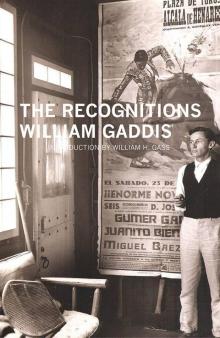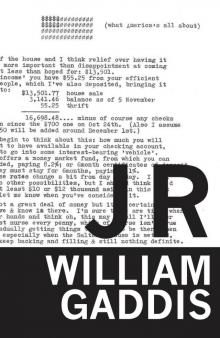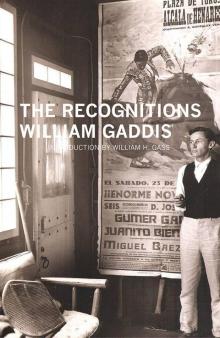- Home
- William Gaddis
Agapē Agape Page 3
Agapē Agape Read online
Page 3
AFTERWORD
Joseph Tabbi
Agapē Agape is William Gaddis’s swan song, his most concentrated fiction, and the one work where he risks a direct address to the reader. The distillation of a project that occupied him throughout his professional life, this final fiction began as an exhaustive social history of the player piano in America, whose lineaments can be read in the thousands of notes, clippings, working papers, drafts, and snippets that Gaddis left at his death. Organized roughly, like all of his manuscripts and background materials, into numbered cardboard boxes, the remains of his research match the narrative description: among the working papers, one finds a chronology from the player’s invention in 1876 to 1929, “when the player piano world and everything else collapsed.” Handwritten reminders, in a hand whose changes can be discerned over half a century, appear in the margins, or on whatever scraps of paper he had around. “Chaos theory as a means toward order,” reads one note among the strips and folders that Gaddis would refer to when composing his last work. After a career spent imagining in detail the vast systems and multiple voices of an emerging global culture—in works that have themselves been called “systems novels”1—Gaddis at the end would reflect primarily on his own private system of assembling materials and putting words down on paper.
As with all of his books, for Agapē Agape much of the working material was cut out from popular magazines and newspapers. (Even the high literature, art, music, and technology references that made him seem forbiddingly “erudite” to some readers often came out of daily papers, or this material was sent to him by acquaintances; possibly more came to him this way than from books.) Often, Gaddis would combine strips on a single topic or under a single date and tape them all the way along one side, on a single long page. When correcting galleys and typescripts, he would insert words and small phrases by hand, but he preferred to lay in new material in typed strips cut with scissors. Composition, for Gaddis, was a distinctly material practice, involving a literal organization and arrangement of found materials, even as his narrator struggles literally to hold himself together. In a sense, the writer becomes the page on which he’s writing: the wreck of an old man in Agapē has rusting staples in his legs, and his skin is like tissue paper from the drugs he’s been taking. He worries that his books will be left on the shelf, unread, while his unpublished research molders in the boxes stacked around him. But as long as he goes on reading, revising, adding to the manuscript, he will stave off death and madness and keep the work from becoming “what it’s about”: entropy, chaos, loss, and a mechanized culture indifferent to the cultivation of particular, individual talents.

 Agapē Agape
Agapē Agape Carpenter's Gothic
Carpenter's Gothic Frolic of His Own
Frolic of His Own The Recognitions
The Recognitions J R
J R The Recognitions (Dalkey Archive edition)
The Recognitions (Dalkey Archive edition)